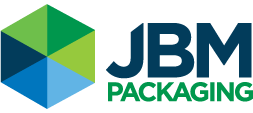Driving Sustainable Change in Packaging: Insights from the American Packaging Summit
Last month, our Director of Sales, Jessica Black, moderated a panel of sustainability and packaging experts from leading retail and consumer goods brands at the American Packaging Summit in Chicago.
With the theme “Designing a new future for manufacturing, quality and supply chain leaders,” the Summit brought together industry professionals to generate ideas, build connections, share insights and develop strategies for the future of packaging.
Jessica posed several important questions to panelists from P&G, Ulta Beauty, Walgreens, MillaporeSigma, and SC Johnson. Those questions focused on these companies are anticipating and adapting to sustainable packaging trends, their strategies for closing the loop and reducing waste, how they communicate their sustainability initiatives and recycling instructions, and the impact of current and upcoming regulations shaping the packaging industry’s sustainable future. Here’s are some of the key takeaways:
- We need to create more consistent and clear messaging to consumers about recycling and sustainability. We can do this by:
- Developing easy-to-understand guidelines that address common consumer questions about recycling specific items.
- Utilizing platforms like the Pact Collective, a nonprofit organization that aims to unite the beauty industry to reduce packaging waste and collaborate toward more circular solutions.
- Designing packaging that is easy to recycle and clearly communicating end-of-life instructions to consumers.
- We should embrace data and incorporate it into our frameworks to make informed decisions around sustainable packaging initiatives. We can do this by:
- When testing various packaging solutions, we need to ensure that we’re also collecting data at every point to better understand their impact.
- Work with your customers to gather data related to their recycling behaviors.
- It’s time to establish a federal framework for Extended Producer Responsibility (EPR). We can do this by:
- Advocating for federal legislation to create a cohesive and standardized EPR framework to avoid inconsistencies caused by state-level regulations.
- We need to simplify the recycling process if we hope to increase recycling rates. We can do this by:
- Transitioning away from using black plastics in packaging to improve recyclability and reduce landfill waste.
- Offer incentives for in-store recycling programs.
- Encourage innovation and flexibility within our packaging “circle.” We can do this by:
- Continuing to explore beyond existing materials and processes to experiment with and test new packaging solutions.
- Highlighting and learning from successful implementations of sustainable packaging to inspire and guide future initiatives. For example: Head & Shoulders’ recyclable shampoo bottle is made from 25 percent beach plastic.
- Share best practices and findings to continue driving sustainable progress.
As a team, we found the session highly informative and valuable. We learned more about the challenges and opportunities in sustainable packaging and it also reinforced a few key points: consistent consumer messaging and using data-driven decisions are critical. Also, that simplifying recycling processes is essential to increasing the amount of recycled material.
By focusing on these challenges and working together to create solutions, we can make significant progress in the development of more eco-friendly and sustainable packaging in the future.


![APS-2-2048x1536[1]](https://www.jbmpackaging.com/wp-content/uploads/2024/07/APS-2-2048x15361-1.jpg)




